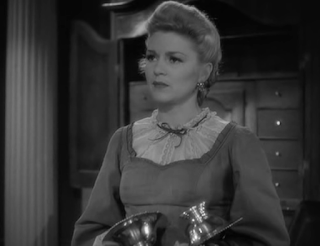directed by Raoul Walsh
photographed by Jack Marta
Agoura, Newall
& Sherwood Forest CA 1940
with Claire Trevor, John Wayne,
Walter Pidgeon, George Hayes,
Roy
Rogers & Marjorie Main
Dark Command
was the second and last film that Raoul Walsh made with John Wayne.
The first picture they did together was of course the first movie in
which Wayne had a leading role, the Big Trail. Prior to that he
was an extra and a prop man employed primarily by Walsh's friend, John
Ford (who apparently had a rather painful crush on this tall athletic
and very pretty young aspiring actor, then billed as Duke Morrison.)
It was Walsh who gave him the name of John Wayne. I don't know why
they didn't work together again after this. The film was shot soon after Ford’s Stagecoach, which established Wayne as a major star and where he also had second billing after Claire Trevor. Dark Command is a fictional telling of the story of Quantrill's Raiders. Here the notorious bushwacker is called Cantrell and played by the unlikely Walter Pidgeon. The film's climax depicts the Lawrence Kansas Massacre
and in no way shows its true extent, where some one hundred eighty
women, men and children were slaughtered by Quantrill's pro-slavery
Rangers. As in all of Walsh's mature films, though especially here, it
is very beautifully photographed with multilayered compositions in the
deepest possible focus.
Saturday, May 27, 2017
Monday, May 22, 2017
Twin Peaks: the Return
David Lynch & Mark Frost
Snoqualmie WA, Las Vegas NV
& Los Angeles CA 2017
Part 1: My log has a message for you.
Part 2: The stars turn and a time presents itself.
Last night I watched the first two parts of the new continuation of Twin Peaks, twice
in immediate succession, and found much to admire both times. I’m
particularly pleased that the very first scene pays direct homage to
Lynch’s two finest works prior to Fire Walk with me, Eraserhead and Dune, in
image and dialogue respectively. There are echos of all of his
major projects to be found in these first two hours of his new eighteen
hour film, but there is more than enough that is new and unexpected as
well. The evolution of the Arm into a sparkling and brain topped tree is an especially welcome development.
Snoqualmie WA, Las Vegas NV
& Los Angeles CA 2017
Part 1: My log has a message for you.
Part 2: The stars turn and a time presents itself.
Sunday, May 21, 2017
I pirati di Capri
regia di Edgar Ulmer e Giuseppe Maria Scotese
musiche di Nino Rota
Taranto, Puglia, e Cinecittà, Roma 1949
Louis Hayward plays Count Amalfi, who Masquerades as Captain Sirroco the leader of the titular Pirates of Capri. Under his aristocratic guise he also functions, within the story, as the chief advisor to the Queen of Naples. His political rival (and his brother’s murderer) is the Minister of Police, Baron Holstein. Set in 1799, the film concerns the inevitable ambiguity of role playing within a popular revolution and the inevitability of the compromises that result. Given access to the greater resources available to him in Italy, Edgar Ulmer was able to produce his most visually elegant film. While the story may recall popular Hollywood swashbucklers like the Mark of Zorro and the Scarlet Pimpernel, Ulmer’s artistry and understanding of history carries it fair beyond those more prosaic models.
musiche di Nino Rota
Taranto, Puglia, e Cinecittà, Roma 1949
Louis Hayward plays Count Amalfi, who Masquerades as Captain Sirroco the leader of the titular Pirates of Capri. Under his aristocratic guise he also functions, within the story, as the chief advisor to the Queen of Naples. His political rival (and his brother’s murderer) is the Minister of Police, Baron Holstein. Set in 1799, the film concerns the inevitable ambiguity of role playing within a popular revolution and the inevitability of the compromises that result. Given access to the greater resources available to him in Italy, Edgar Ulmer was able to produce his most visually elegant film. While the story may recall popular Hollywood swashbucklers like the Mark of Zorro and the Scarlet Pimpernel, Ulmer’s artistry and understanding of history carries it fair beyond those more prosaic models.
Subscribe to:
Posts (Atom)




























































